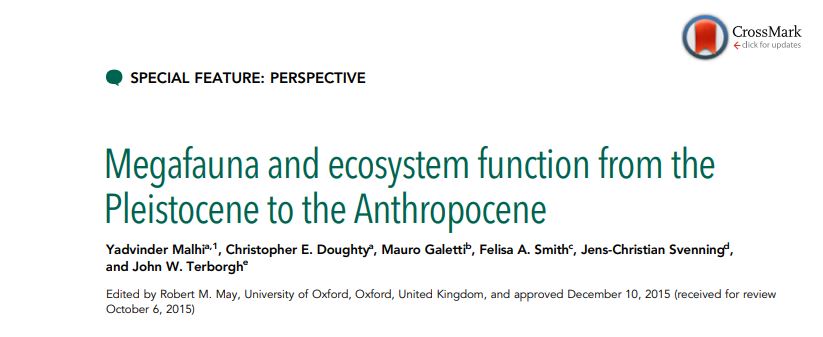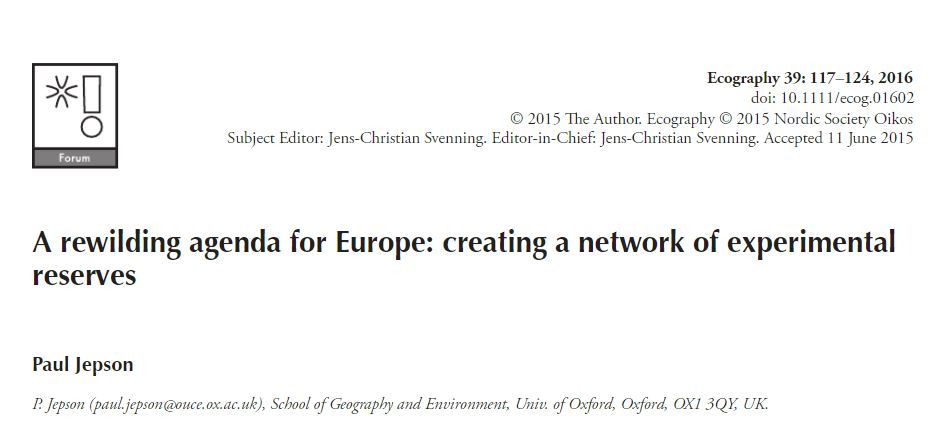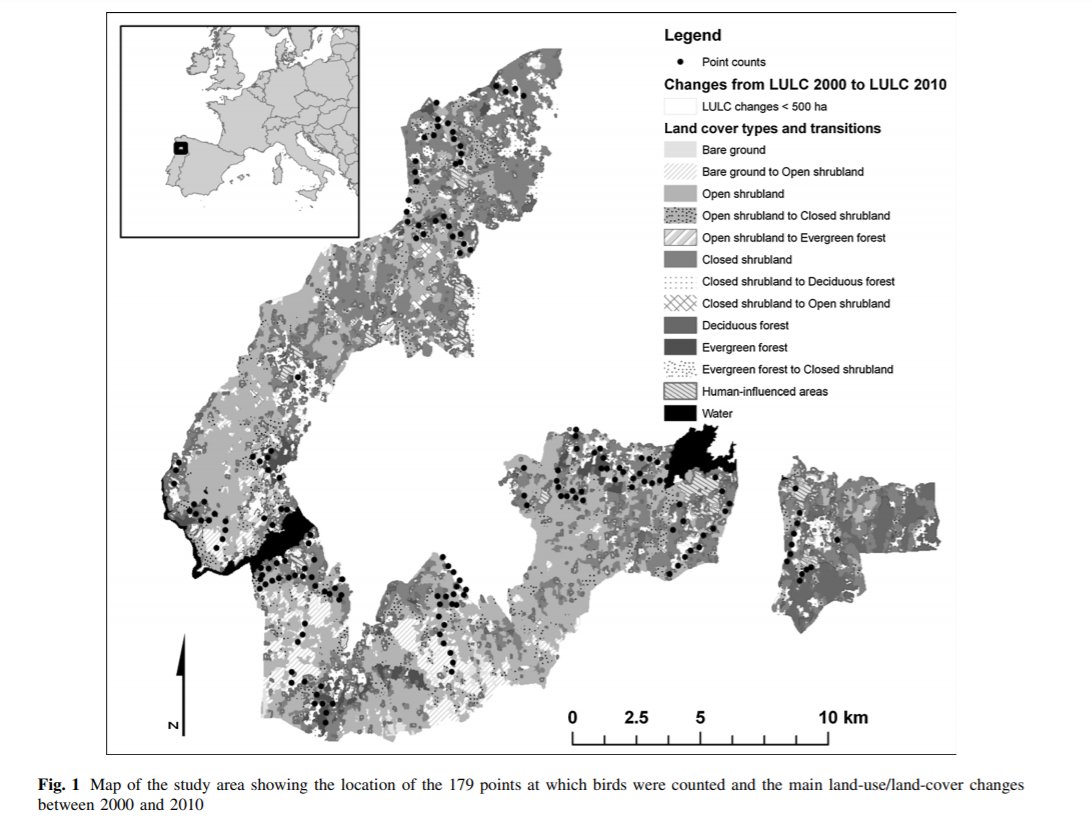
Kicking off the afternoon session of the #RewildingSymposium is @JCSvenning talking about 'restoring the role of megafauna in European ecosystems'
He begins by highlighting that current megafauna is unusually poor. Last at this level >30 million years ago. Historically, super diverse megafauna was the norm.
He points out that most current species are 100,000 to >1m years old. Meaning they have a complex evolutionary background with the landscape and complex ecological characteristics
The presence of megafauna promotes biodiversity and provide crucial ecosystem services and trophic effects through, predation, seed dispersal, grazing, browsing, carbon diversification and non-trophic disturbance. Promoting heterogeneity both vegetation and abiotic 

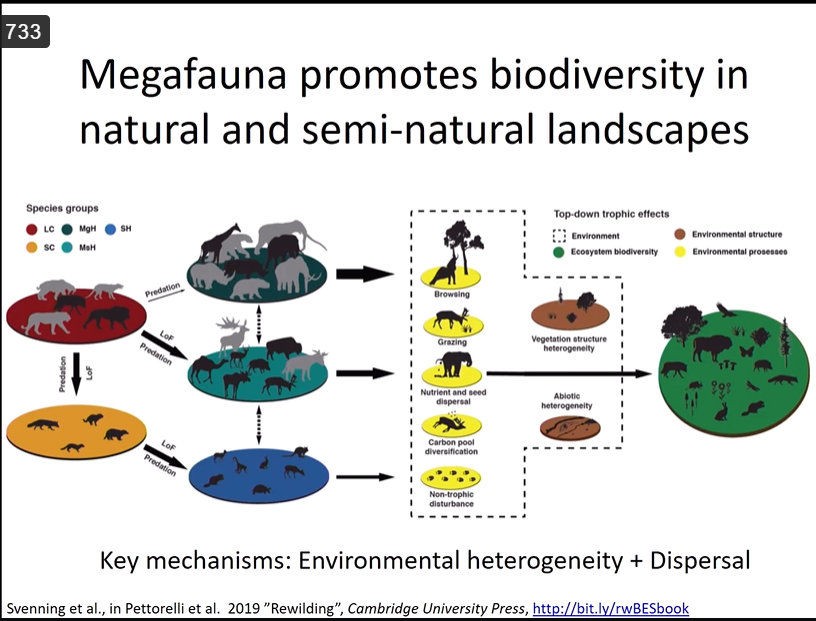
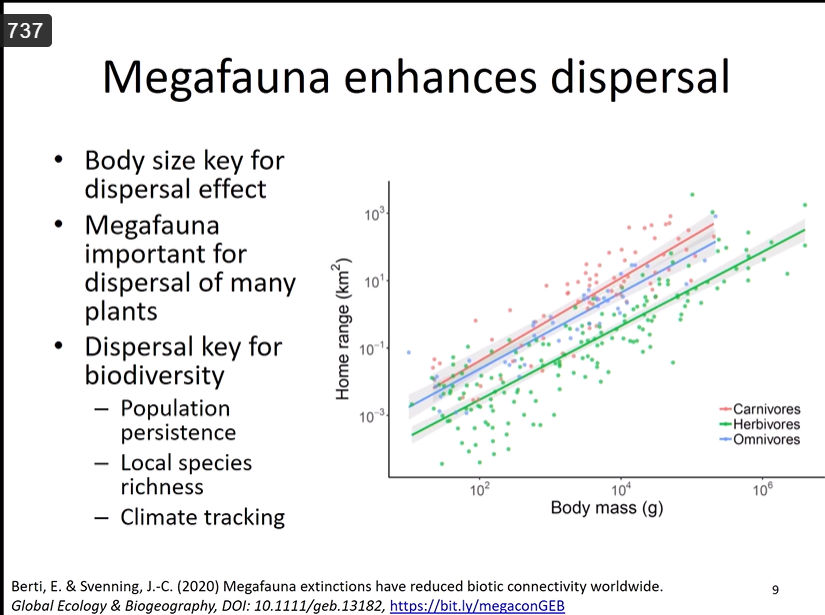
The absence of large herbivores is also threatening species depended on open and semi open habitats in Europe. Including species which are specifically adapted to megafauna effects. Europe has a far lower levels of herbivore biomass compared to what would be considered normal 
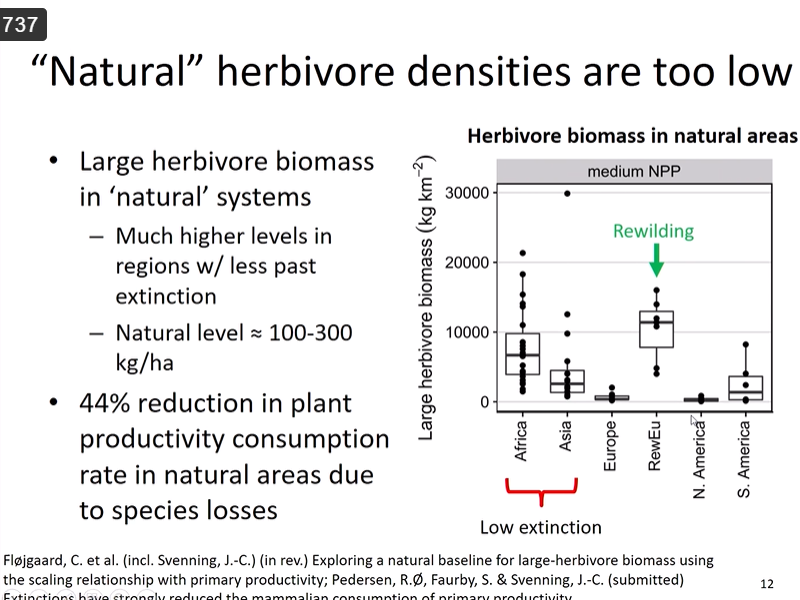
The ‘Myth’ of predation control. Jens-Christian stresses that large-herbivore biomass is not limited by predation, instead it is balanced. In Yellowstone while Elk numbers reduced as is regularly stated, bison levels have increased in reponse to the presence of wolves.
He then pushes the case for reintroductions to complement the upscaling potential of large herbivore populations. Suggesting species which should be reintroducted across much of Europe in response of the absence of wild large herbivores, all of which have a long history in Europe 
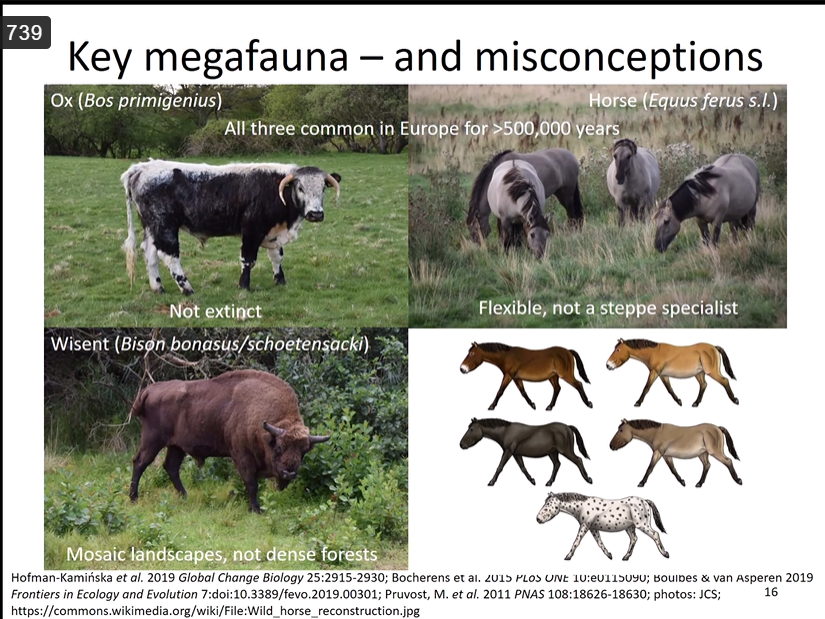
Within reintroduction it is important to consider megafauna as continental, suggesting that national scale is irrelevant. It is also not just about where species are coming from but about their function. Meaning non-natives can have a place in introductions
He then states that people are central to rewilding. Including democratic, fair implementation, working with people to make space for nature & through adaptive management as a result of ongoing monitoring. Coexistence is challenging but not any more so than elsewhere in the world
As with Frans earlier, Jens-Christian ends by bring up climate change and the need for climate resilience. Something that rewilding can provide through the restoration of large areas to nature and carbon sequestration
In response to a question about bias towards megafauna, he says that it gets a disproportionate attention due to the levels they have been pushed back and that plants, insects etc have generally been more of a focus for conservation
Next up is Patrick Jansen discussing - how we can measure rewilding success? (and I would imagine failure) #RewildingSymposium #rewildingscience
So what should we be measuring? Patrick suggests Rewilding actions, ecosystem integrity, heterogeneity and biological diversity 
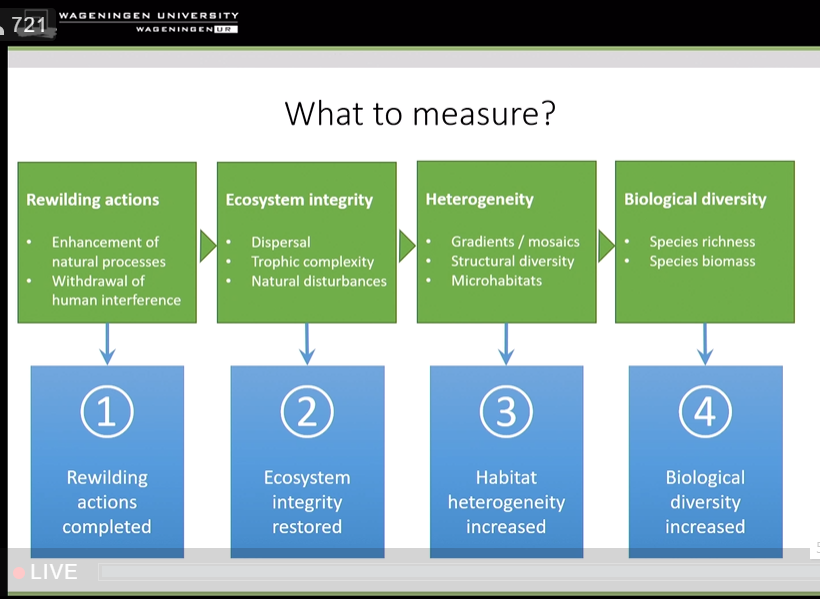
To measure rewilding actions he suggest the use of the rewilding score (Torres et al 2018) which considers ecological integrity and human impacts and outputs. Highlighting where certain landuse currently sits 
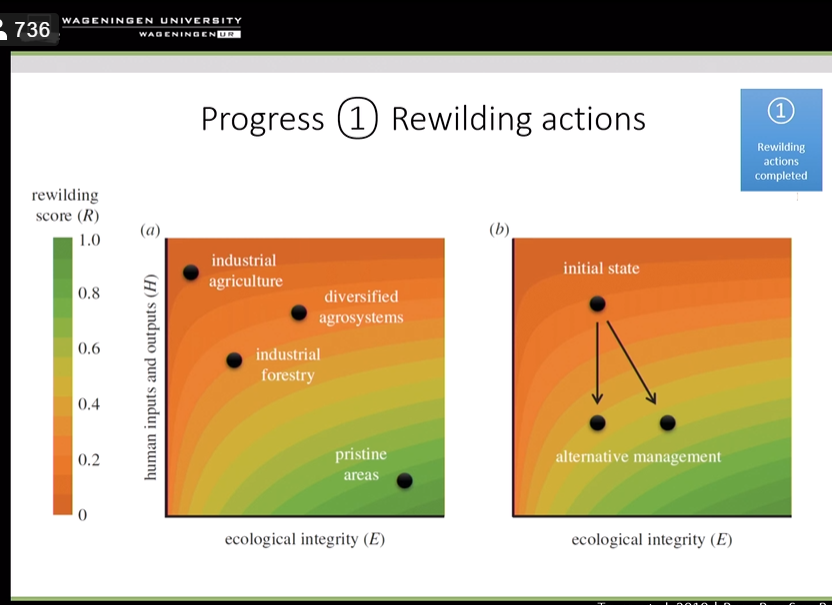
For ecological integrity, he proposes the benefits of long-term camera traps studies to measure wildlife comebacks and enable us to compare different assemblages in different places 
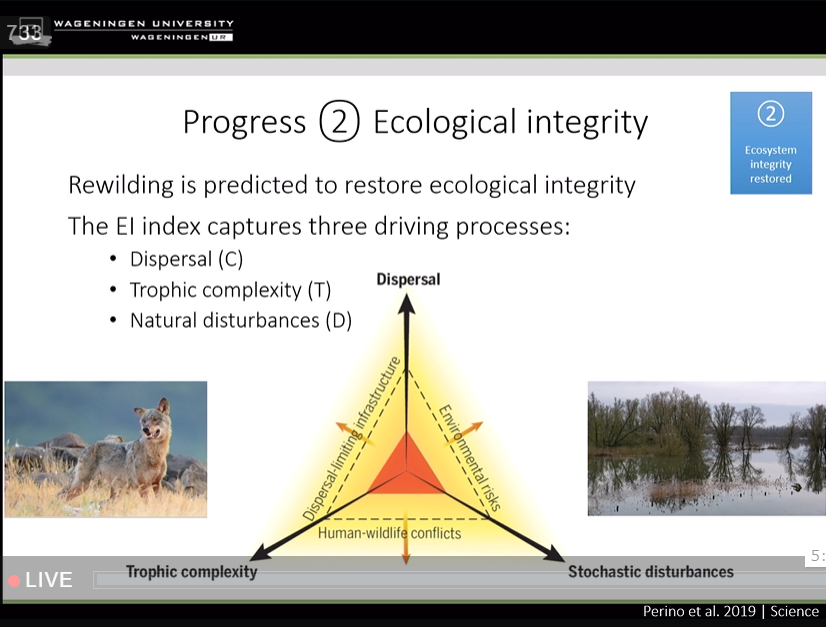
Patrick supports the use of advanced remote sensing tools that are currently widely used as effective ways to study heterogentity 
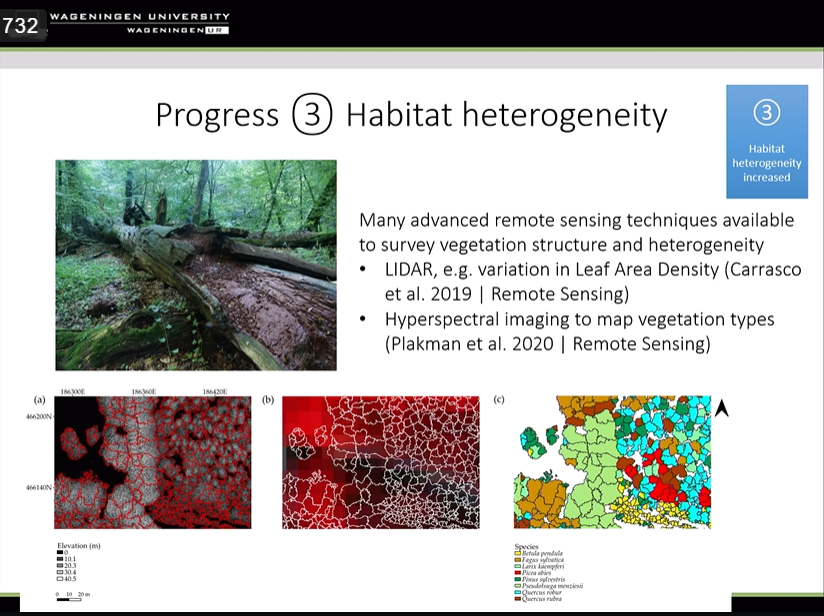
and finally for measuring biological diversity we can aim to use repeated field sampling techniques in fixed spots, although he accepts its complicated as different species require different methods. 

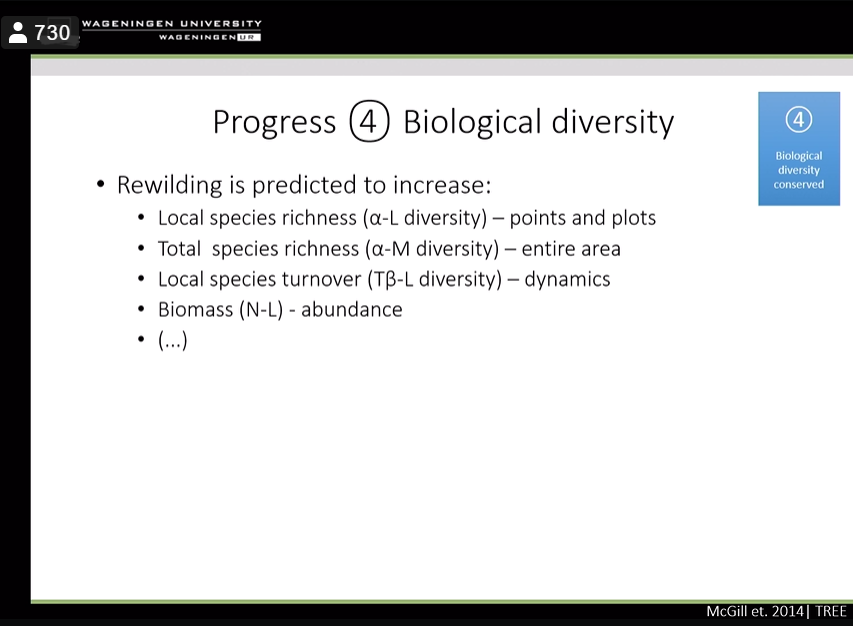
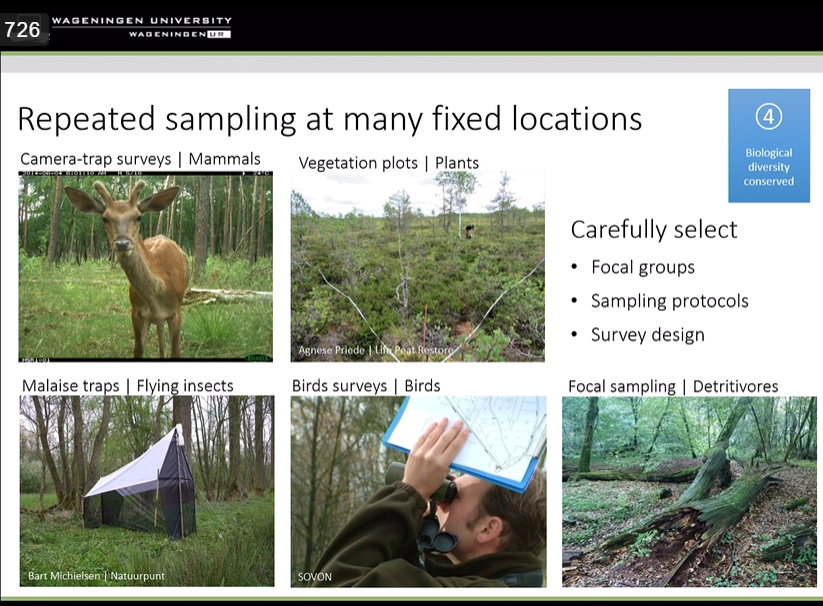
Using this data we can use biodiversity indices to analyse trends in time and space, or using a mean species abundance metric which compares biodiversity to a reference site.
Patrick suggest we need to use all these measures not just before and after rewilding but also in different sites, including some where rewilding has not occurred to isolate effects of rewilding from autonomous trends
Using a dutch floodplain example, he shows us the positive impacts rewilding have been shown to have to have through the effective use of measurements 
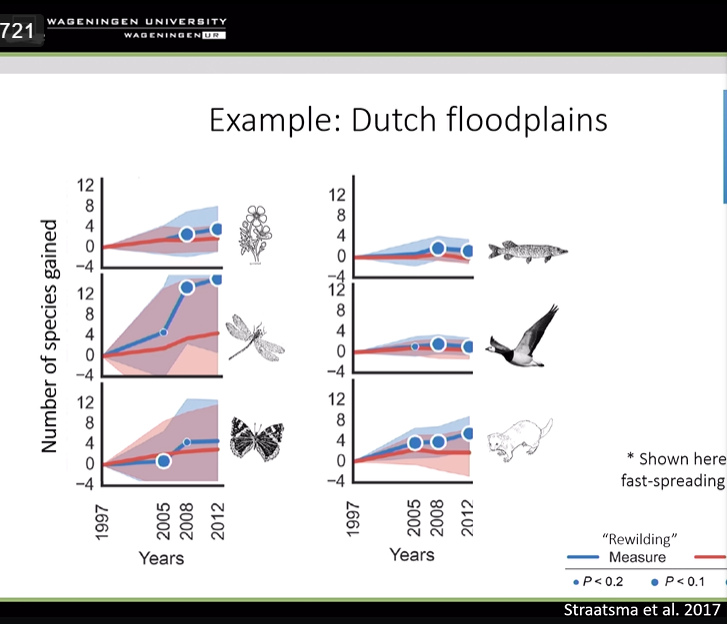
He concludes by stating that monitoring success will require substantial efforts and will need standards for habitat and biodiversity monitoring. Will also need before and after control impact design and finally select reference areas for comparison.
Some really interesting questions from the audience asking about methods for evaluating the social success of rewilding. This is not where Patrick specialises but is certainly crucial in monitoring success if rewilding is to be taken seriously with its claims of social importance
The final presentation for today #RewildingSymposium is by Liesbeth Bakker on 'Connecting #rewildingscience and practice'
She begins by talking about the switch in the 70’s and 80’s in Netherlands to a greater emphasis on free-ranging large herbivores. Starting with Scottish Highland cattle, Heck cattle, Galloways and Sayaguesa. For the absent tarpan Exmoor ponies and Konik’s. 
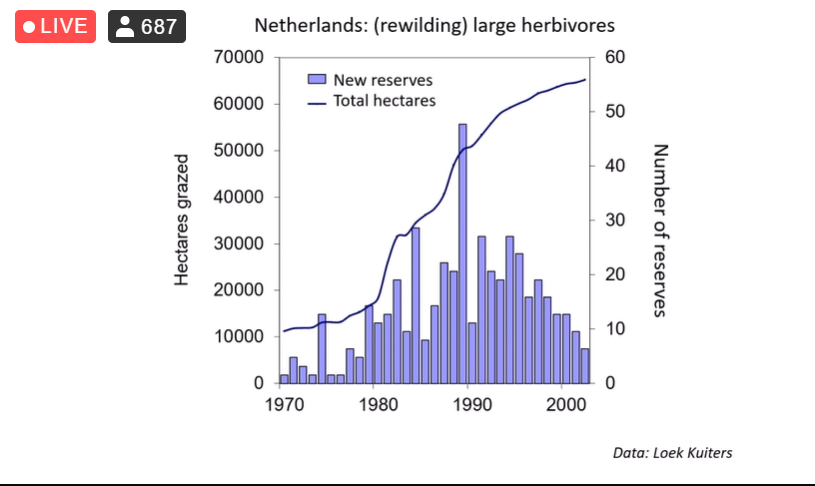
This has led to a diverse assemblage of herbivores, but we don’t have much of a knowledge of the impact of this compared to traditional seasonal grazing. Science is lagging behind rewilding initiatives, most published literature are essays rather than using primary data 
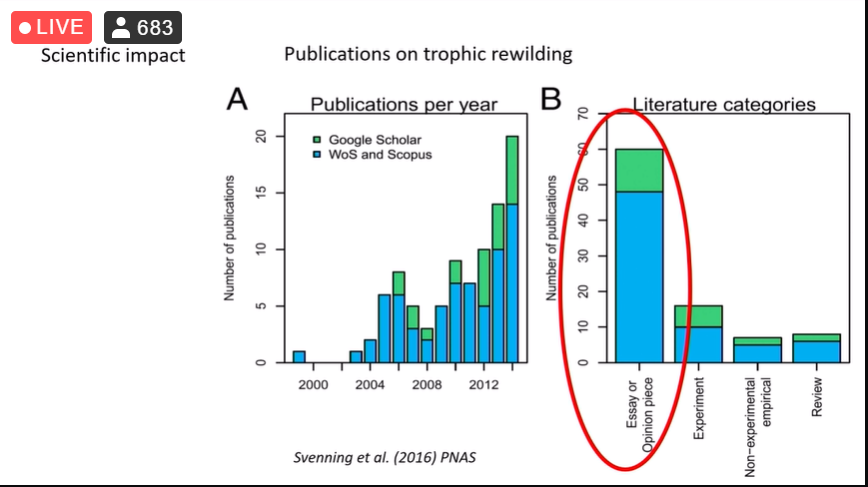
A lot of the data on rewildings impacts exist, but it is not done by academic researchers, rather by practitioners who have monitored sites for years and have excellent knowledge of their sites. A valuable resource if rewilding outputs are going to be effectively evaluated.
How can more be done to team up? European Rewilding Network – 69 members in 27 countries with sites available for research. Value in science going on outside of academic world, Including using art and other creative skills – @RewildingSussex initiatives a great example of this 

Liesbeth says there are plenty of examples of rewilding in action and skills scientists can use, scientists can work alongside practice to help quantify and test the concepts that we think are occurring.
As well as this, practice can benefit from science through testing the application of different mechanisms, experiments and replications
To finish Liesbeth, highlights sequestration, climate change mitigation, wildfire mitigation, and restoring biodiversity of primary areas where science and practice in rewilding should be collaborating. Transdisciplinary effort, to include social and economic aspects
The conlcuding remarks of the conference. To answer David Attenborough's question 'Can we rewild the world?' Yes we can, if we work together, scientists, practitioners, and wider society
• • •
Missing some Tweet in this thread? You can try to
force a refresh


